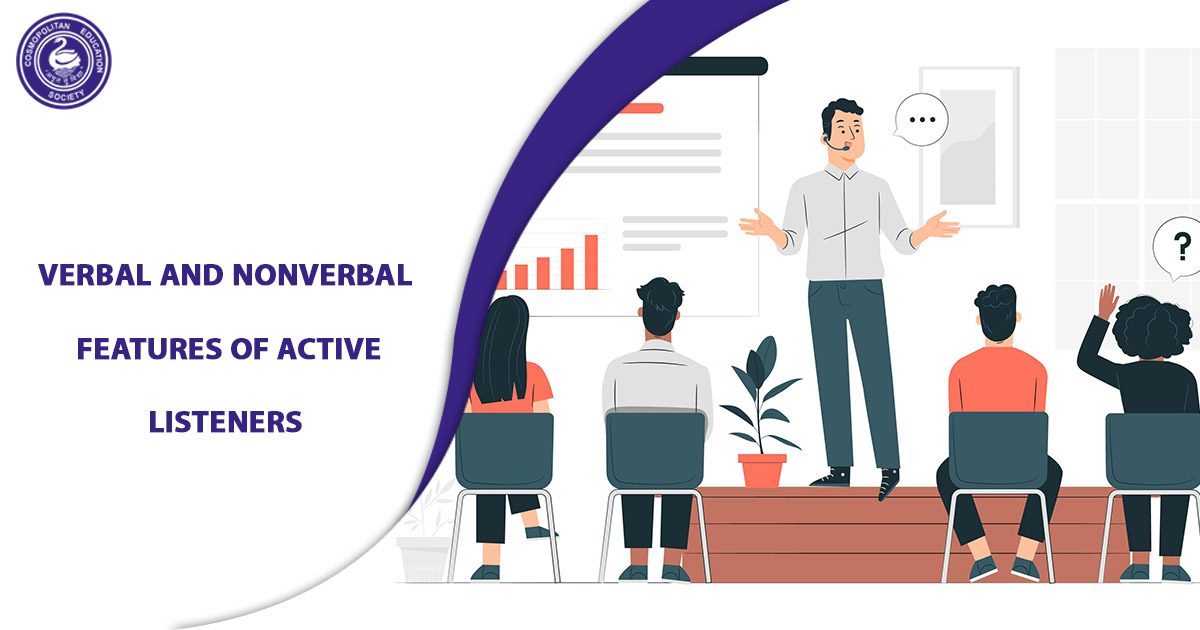
Verbal and non-verbal features of active listeners
As we all are well aware, Interpersonal skills are nothing but a set of traits human possesses in order to interact and communicate with fellow people. In the corporate world, it could be interacting with employees, customers, and suppliers whereas in a school setting it could be interacting with fellow students and teachers. A vital trait that is non-negotiable in today’s over-competitive world is having strong interpersonal skills. In fact, many corporates are evaluating not only technical knowledge but also interpersonal or communication skills before hiring. This makes it even more important to start inculcating good interpersonal skills right forms school in order to stand out from the crowd in the future.
One vital skill from the massive list of important interpersonal skills is Listening: Active Listening
What is Active Listening?
Active listening basically means the ability/habit to listen to the speaker with full concentration using all of your senses. Active Listening is an integral part of interpersonal skills which can be developed with disciplined practice, as it is not something that we are born with. Patience is the key to the successful progression towards mastering active listening.
What are the characteristics of Active Listeners?
An Active listener demonstrates verbal as well as non-verbal signs. A major point to ponder is that all of these signs may not be a correct fit for every situation. For example, crying out loudly does not fit the hilarious situation. Simply put, the use of the below-mentioned signs of active listening may vary in accordance with the kind of situation that is on hand.
Non-Verbal Characteristics of Active Listener
Maintaining eye contact and appropriate physical posture are important traits an active listener demonstrates.
1. Maintaining Eye Contact
An active listener ensures that they have developed and maintained eye contact with the speaker. In addition to eye contact active listener seldom sets themselves apart with smiles or facial expression that is appropriate to the given situation.
2. Physical Posture
The second most important non-verbal sign of an active listener is physical posture. During interpersonal conversations, most of the time an ac active listener will lean forward to some extent. This not only displays interest but is also involved in the conversation.
3. Hand Movements
Over and above that, hand movements and gestures play a pivotal role in non-verbal active listening. It is said that an active listener talks not only with words but their actions speak louder.
4. Avoids Distractions
In this world of technology, it has become very easy to distract listeners. All you need to hear is a notification bell on your cell phone. You will notice that an active listener is not too concerned about a phone call or a phone notification. Active listeners are seldom ignorant of external stimuli making them engaged and focus better.
Verbal Characteristics of an Active Listener
Apart from non-verbal features, let’s look at some verbal features an active listener displays.
1. Remembering
An active listener most of the time remembers key pointers or key information shared by the speaker.
2. Encourages Question and Answer
Not only question and answer is a trait an active listener displays but also it acts as feedback to the speaker. A speaker who did not get too many questions is either too perfect or not at all up to the mark. An active listener will without fail question the speaker about something from the topic discussed. The speaker can, on the other hand, also question you about what he or she is talking about to check to see whether you are actively listening to them or not.
3. Usage of Optimistic Words
An active listener often will reinforce the speaker with words like “yes”, “absolutely correct”, and “your right”. This not only boosts the confidence of the speaker but also increases audience and speaker bonding.
4. Immediate Clarify
In case of a doubt or misunderstanding, an active listener won’t just be on it. The need for immediate answers gets them to clarify confusion on the spot. They won’t fear raising their hands from a crowd of 100 people to get their answers.
5. Open to Sharing Experiences
Post any speaker is done, they ask for feedback through conversations. An active listener will not heritage to add value to the speaker’s topic by narrating his/her own experience related to the discussed topic.
Summing up:
In the future when kids enrol themselves for higher education, a GD (group discussion) mainly assesses interpersonal skills like communication and listening. Hence, we at Harshad Valia International School give importance to all-around development where not only academic growth but personal growth is also encouraged.
Here are some additional tips to boost listening skills in children.
